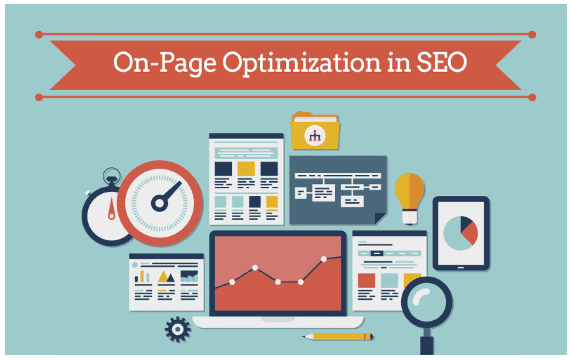Table of Contents
ToggleDid you know that keyword analysis can be a powerful tool for driving success in your SaaS business?
By understanding the search terms that potential customers use to find your product, you can optimize your website, marketing campaigns, and product development to better meet their needs.
But with the constantly evolving landscape of SEO and search algorithms, it can be overwhelming to figure out how to get started with keyword analysis. That’s why we’ve put together this comprehensive guide to help you understand the basics and leverage this valuable tool for success in 2023.
In this article, we’ll cover everything from the basics of keyword research to advanced tactics for leveraging that research to drive conversions and grow your SaaS business. So let’s get started!
Understanding Keyword Analysis for SaaS Businesses
A keyword analysis is a critical component of SEO (Search Engine Optimization) for SaaS businesses. It involves identifying the keywords and phrases that potential customers use to search for the products and services the company business offers.
The goal is to optimize the website and other digital assets to rank higher in search engine results pages (SERPs) for these keywords and phrases.
SaaS businesses should use a combination of tools and techniques to conduct keyword analysis.
- Firstly, they should start with a brainstorming session to develop a list of potential keywords and phrases.
- Next, they can use tools like Google Keyword Planner and Ahrefs to research search volume, competition, and related keywords. It’s also important to consider the intent behind each keyword and whether it aligns with the business’s goals.
- Once a list of keywords has been identified, SaaS businesses can optimize their website and other digital assets. This includes incorporating the keywords into website content, meta descriptions, and URLs. It’s also important to consider other factors impacting SEO, such as website speed and mobile-friendliness.
A keyword analysis is a critical step in optimizing the online presence of SaaS businesses. By identifying and targeting the right keywords, companies can increase visibility and attract more potential customers to their websites.
Importance of keyword analysis for driving website traffic and lead generation
A keyword analysis is crucial for driving website traffic and lead generation because it helps businesses understand what their target audience is searching for online. By identifying and targeting the right keywords, companies can increase their visibility and attract potential customers to their websites.
Keyword analysis helps businesses to optimize their website and digital assets for search engines, making it easier for potential customers to find them.
When a website ranks higher in search engine results pages (SERPs) for relevant keywords, it is more likely to be clicked on by users. This increased visibility can lead to more website traffic and lead-generation opportunities.
In addition to driving website traffic, keyword analysis can help with lead generation by targeting keywords more likely to attract qualified leads.
By identifying the keywords that potential customers are using to search for solutions to their problems, businesses can tailor their content and messaging to speak directly to their target audience. This can attract higher-quality leads who are more likely to convert into paying customers.
A keyword analysis is a critical component of any SEO strategy, helping businesses to drive website traffic and generate leads. By understanding what their target audience is searching for and optimizing their website and digital assets accordingly, companies can increase their online visibility and attract more qualified leads to their website.
Identifying Key SaaS Keywords keywords relevant to your business
Identifying essential SaaS keywords relevant to your business is critical for optimizing your online presence and attracting potential customers. Here are some tips for identifying the right keywords:
- Brainstorm: Start by brainstorming a list of potential keywords relevant to your business. Consider the products and services you offer and any pain points or challenges your target audience may be experiencing.
- Use keyword research tools: There are several keyword research tools available, such as Google Keyword Planner, Ahrefs, and SEMrush. These tools can help you identify search volume, competition, and keywords.
- Consider intent: When selecting keywords, it’s essential to consider the meaning behind each one. Are people searching for informational content or looking to make a purchase? By understanding the intent behind each keyword, you can tailor your content and messaging accordingly.
- Focus on long-tail keywords: Long-tail keywords are longer, more specific phrases that are less competitive but can be highly relevant to your target audience. You can attract more qualified leads to your website by targeting long-tail keywords.
- Analyze your competitors: Look at the keywords your competitor’s target and rank for. This can give you insights into the keywords most relevant to your industry and target audience.
You can identify the critical SaaS keywords most relevant to your business and optimize your online presence accordingly. This can help you attract more potential customers and drive growth for your business.

Utilizing tools such as Google Keyword Planner and SEMrush to research keywords
Utilizing tools such as Google Keyword Planner and SEMrush can help businesses research and identify the most effective keywords for their SaaS business. Here are some tips on how to use these tools effectively:
- Google Keyword Planner: This tool can help businesses identify the search volume and competition for specific keywords. To use it, start by entering a keyword related to your business.
Google will then provide a list of related keywords, search volume, and suggested bids for paid advertising. Use this information to identify your business’s most relevant and valuable keywords. - SEMrush: This tool offers a range of features for keyword research, including keyword analytics, competitor analysis, and topic research. To use it effectively, start by entering a keyword related to your business.
SEMrush will then list related keywords and information on their search volume, competition, and cost per click. You can also use SEMrush to analyze your competitors’ websites and identify the keywords they target and rank for. - Long-tail keywords: Google Keyword Planner and SEMrush can help businesses identify long-tail keywords relevant to their target audience. Long-tail keywords are more specific and less competitive than broad keywords, making them an effective way to attract qualified leads to your website.
Utilizing tools such as Google Keyword Planner and SEMrush can help businesses identify the most effective keywords for their SaaS business. By researching and targeting the right keywords, companies can optimize their online presence and attract more potential customers to their websites.
Analyzing Keyword Performance of keywords on your website and in your marketing campaigns
Analyzing the keyword performance of keywords on your website and in your marketing campaigns is crucial for understanding how effectively you are reaching and engaging your target audience. Here are some tips on how to analyze keyword performance:
- Google Analytics: Google Analytics provides a wealth of information on how users interact with your website, including which keywords drive the most traffic and engagement. Use the “Acquisition” section of Google Analytics to analyze organic search traffic and the “Behavior” section to analyze user engagement with your content.
- SEMrush: SEMrush provides a range of features for analyzing keyword performance, including keyword rankings, search volume, and competition. Use SEMrush to track your keyword rankings over time and identify opportunities for improving your SEO strategy.
- Conversion tracking: Analyzing keyword performance is not just about driving website traffic but also conversions. Use conversion tracking tools like Google Ads and Facebook Ads to track how effectively your keywords drive leads and sales. Use this information to optimize your campaigns and messaging for better results.
- A/B testing: A/B testing can help you understand how different keywords and messaging impact user engagement and conversion rates. Use A/B testing tools to test headlines, CTAs, and messaging to identify what resonates most with your target audience.
By analyzing the performance of your keywords, you can gain valuable insights into what is working and what needs improvement in your SEO and marketing strategies. Use this information to optimize your campaigns and messaging for better results and continuously improve your online presence.
Identifying high-performing keywords and opportunities for improvement
Identifying high-performing keywords and opportunities for improvement is crucial for optimizing your online presence and driving growth for your SaaS business. Here are some tips on how to identify high-performing keywords and opportunities for improvement:
- Keyword ranking: Use tools like Google Search Console and SEMrush to track your orders and identify the keywords driving the most traffic to your website. Optimize these high-performing keywords to improve online visibility and attract more potential customers.
- Conversion rate: Analyze your conversion rate for different keywords and identify the keywords driving the most leads and sales. Use this information to optimize your landing pages and messaging for better results.
- Keyword competition: Identify the keywords with high search volume but low competition, as these can be highly valuable for driving website traffic and leads. Use tools like Google Keyword Planner and SEMrush to research competition levels for different keywords.
- User Intent: Consider the meaning behind each keyword and ensure that your content and messaging align with what users are looking for. This can attract more qualified leads and improve your conversion rate.
- Long-tail keywords: Focus on targeting long-tail keywords that are highly specific and relevant to your target audience. These keywords can be less competitive but more valuable for driving qualified leads to your website.
By identifying high-performing keywords and opportunities for improvement, you can optimize your online presence and drive growth for your SaaS business. Use this information to continuously improve your SEO and marketing strategies and stay ahead of the competition.

Strategies for Leveraging Keyword Analysis for SaaS Business Success
Leveraging keyword analysis is essential for SaaS businesses to succeed in today’s competitive online landscape. Here are some strategies for effectively leveraging keyword analysis for SaaS business success:
- Develop a keyword-focused content strategy: Use keyword analysis to inform your content strategy, focusing on creating high-quality, engaging content targeting the keywords most relevant to your business. This can help to improve your search engine rankings, drive more website traffic, and attract more qualified leads to your business.
- Optimize your website and landing pages: Use keyword analysis to optimize your website and landing pages for search engines, focusing on incorporating relevant keywords into your content, meta descriptions, and URLs. This can help to improve your search engine rankings and drive more traffic to your website.
- Use paid advertising: Use keyword analysis to inform your paid advertising strategy, targeting keywords highly relevant to your business and your target audience. This can drive more qualified leads to your website and improve your conversion rate.
- Analyze your competition: Use keyword analysis to analyze your competition, identifying the keywords that they are targeting and ranking for. Use this information to inform your keyword strategy and stay ahead of the competition.
- Monitor and adjust: Continuously monitor and adjust your keyword strategy based on the results you are seeing. Use tools like Google Analytics and SEMrush to track your performance and identify areas for improvement.
By effectively leveraging keyword analysis, SaaS businesses can improve their online visibility, attract more qualified leads, and drive growth for their business. Use these strategies to stay ahead of the competition and succeed in the online marketplace.
Developing Effective Keyword Strategies to improve website traffic and lead generation
Developing effective keyword strategies is crucial for improving your SaaS business’s website traffic and lead generation. Here are some tips on how to create an effective keyword strategy:
- Define your target audience: Identify and understand their pain points, needs, and preferences. Use this information to develop a list of keywords and phrases most relevant to your target audience.
- Conduct keyword research: Use tools like Google Keyword Planner, Ahrefs, and SEMrush to research search volume, competition, and related keywords for your target keywords. Use this information to identify your business’s most valuable and relevant keywords.
- Focus on long-tail keywords: Long-tail keywords are more specific and less competitive than broad keywords, making them an effective way to attract qualified leads to your website. Focus on targeting long-tail keywords that are highly specific and relevant to your target audience.
- Optimize your website and landing pages: Use your target keywords to optimize your website and landing pages, incorporating them into your content, meta descriptions, and URLs. This can help to improve your search engine rankings and drive more traffic to your website.
- Monitor and adjust: Continuously monitor and adjust your keyword strategy based on the results you are seeing. Use tools like Google Analytics and SEMrush to track your performance and identify areas for improvement.
SaaS businesses can improve their online visibility, attract more qualified leads, and drive growth for their business. Use these tips to develop a strategy tailored to your target audience and business goals, and continuously monitor and adjust your system to stay ahead of the competition.
Utilizing long-tail keywords, identifying low-competition keywords, and targeting local keywords
Utilizing long-tail keywords, identifying low-competition keywords, and targeting local keywords are effective strategies for optimizing your keyword strategy and improving website traffic and lead generation for your SaaS business. Here’s how to utilize these strategies:
- Long-tail keywords: Long-tail keywords are longer, more specific phrases that are less competitive but can be highly relevant to your target audience. You can attract more qualified leads to your website by targeting long-tail keywords.
Consider your target audience’s needs and pain points to identify long-tail keywords. Use keyword research tools like Google Keyword Planner and SEMrush to find relevant long-tail keywords. - Low-competition keywords: Low-competition keywords are keywords with lower levels of competition in search engine results pages (SERPs). By targeting these keywords, you can improve your chances of ranking higher in search results and attracting more qualified leads.
Use keyword research tools to identify keywords with low competition levels and incorporate them into your content and SEO strategy. - Local keywords: Targeting local keywords can be effective for SaaS businesses with a local presence, such as those offering services to a specific city or region. Use location-specific keywords in your website content, meta descriptions, and URLs to attract local leads and improve your search engine rankings for local search queries.
Utilizing long-tail keywords, identifying low-competition keywords, and targeting local keywords are effective strategies for improving website traffic and lead generation for your SaaS business. Incorporate these strategies into your keyword strategy and continuously monitor and adjust your approach to stay ahead of the competition.

Optimizing On-Page Content with targeted keywords to improve search engine rankings
Optimizing on-page content with targeted keywords improves search engine rankings and drives traffic to your SaaS business website. Here are some tips on how to effectively optimize on-page content with targeted keywords:
- Conduct keyword research: Use tools to identify relevant and high-value keywords that align with your target audience and business goals. Incorporate these keywords into your website content, meta descriptions, and URLs.
- Use keywords naturally: Use keywords naturally and seamlessly, avoiding keyword stuffing or over-optimization. Use synonyms and related keywords to provide different content and avoid redundancy.
- Create high-quality content: Write high-quality content that provides value to your target audience and answers their questions. Use targeted keywords in headings, subheadings, and body copy to optimize for search engines.
- Optimize meta descriptions: Write compelling and descriptive meta descriptions that include targeted keywords to improve click-through rates from search engine results pages (SERPs).
- Use structured data: Use structured data, such as schema markup, to provide additional information to search engines and improve your search engine rankings.
- Optimize for mobile: Ensure that your on-page content is optimized for mobile devices, as more and more users are accessing the internet via mobile devices.
By optimizing on-page content with targeted keywords, SaaS businesses can improve their search engine rankings and drive more traffic to their website. Use these tips to optimize your website and continuously monitor and adjust your approach to stay ahead of the competition.
Identifying critical areas for keyword placement and optimizing page titles, meta descriptions, and image alt tags
Identifying critical areas for keyword placement and optimizing page titles, meta descriptions, and image alt tags are essential strategies for improving search engine rankings and driving traffic to your SaaS business website. Here’s how to effectively optimize these areas:
- Page titles: Use targeted keywords in your page titles to improve search engine rankings and attract more clicks from SERPs. Include your primary keyword at the beginning of the page title for maximum impact.
- Meta descriptions: Write compelling and descriptive meta descriptions that include targeted keywords to improve click-through rates from SERPs. Use the primary keyword in the meta description and keep it within 155-160 characters.
- Heading tags: Use heading tags (H1, H2, H3, etc.) to structure your content and incorporate targeted keywords in titles to improve search engine rankings.
- Body copy: Incorporate targeted keywords naturally throughout your body copy, using them in sentences and paragraphs to improve relevance and search engine rankings. Use variations of targeted keywords for a more comprehensive approach.
- Image alt tags: Use targeted keywords in image alt tags to improve your images’ relevance and search engine rankings.
By optimizing these critical areas with targeted keywords, SaaS businesses can improve their search engine rankings and drive more traffic to their website. Use these tips to optimize your website and continuously monitor and adjust your approach to stay ahead of the competition.
Developing Effective Paid Search Campaigns using targeted keywords
Developing effective paid search campaigns using targeted keywords is a powerful way to drive traffic and leads to your SaaS business website. Here are some tips on how to develop effective paid search campaigns using targeted keywords:
- Conduct keyword research: Use tools to identify relevant and high-value keywords that align with your target audience and business goals. Use these keywords to create targeted ads to attract qualified leads to your website.
- Target specific audiences: Use targeting options such as location, demographics, interests, and behaviors to narrow your audience and increase the relevancy of your ads. This will help you to attract more qualified leads and improve your conversion rate.
- Develop compelling ad copy: Write ad copy relevant to your target audience, highlighting the benefits of your products or services. Use targeted keywords in the ad headline and copy to improve the relevance and increase clicks.
- Use effective landing pages: Ensure your landing pages are optimized for conversions, using targeted keywords in the page title, meta description, and body copy. Include a clear call to action (CTA) that encourages visitors to take the desired action, such as filling out a form or purchasing.
- Monitor and adjust: Monitor your ad performance and adapt your strategy to improve your results. Use tools like Google Ads and Facebook Ads to track your ad performance and identify areas for improvement.
By developing effective paid search campaigns using targeted keywords, SaaS businesses can drive more traffic, lead to their website, and improve their conversion rate. Use these tips to develop a targeted, effective paid search strategy that aligns with your business goals and target audience.

Identifying key target audiences and optimizing ad copy for maximum impact
Identifying key target audiences and optimizing ad copy for maximum impact is crucial for developing effective paid search campaigns that drive traffic and leads to your SaaS business website. Here’s how to effectively identify target audiences and optimize ad copy:
- Define your target audience: Define your target audience, considering demographics, interests, and behaviors. Use this information to develop a list of keywords and phrases most relevant to your target audience.
- Conduct keyword research: Use tools to identify relevant and high-value keywords that align with your target audience and business goals. Use these keywords to create targeted ads to attract qualified leads to your website.
- Develop compelling ad copy: Write ad copy relevant to your target audience and highlighting the benefits of your products or services. Use targeted keywords in the ad headline and copy to improve the relevance and increase clicks.
- Use ad extensions: Use ad extensions, such as site link extensions and callout extensions, to provide additional information and improve the effectiveness of your ads.
- Test and optimize: Continuously test and optimize your ad copy to improve your results. Use A/B testing tools to test different ad copy variations and identify what resonates most with your target audience.
SaaS businesses can develop effective paid search campaigns that drive traffic and leads to their website by identifying key target audiences and optimizing ad copy for maximum impact. Use these tips to develop a targeted, effective paid search strategy that aligns with your business goals and target audience.
Conclusion
In conclusion, keyword analysis is a powerful tool for driving website traffic and lead generation for SaaS businesses.
By developing an effective keyword strategy, optimizing on-page content, and creating targeted paid search campaigns, SaaS businesses can improve their search engine rankings, attract more qualified leads, and drive growth for their business.
It’s essential to continuously monitor and adjust your keyword strategy based on performance data and stay ahead of the competition. With a strong keyword strategy, SaaS businesses can succeed in the online marketplace and achieve their business goals.
Final thoughts and recommendations
In today’s digital age, keyword analysis is essential for the success of SaaS businesses. By developing effective keyword strategies, optimizing on-page content, and creating targeted paid search campaigns, SaaS businesses can improve their online presence, attract more qualified leads, and drive growth for their business.
To get the most out of keyword analysis, staying up-to-date on the latest trends and tools in the industry is essential. Continuously monitor your performance data and adjust your strategy based on what’s working and what’s not.
In addition, remember to prioritize user experience and engagement when optimizing your website and marketing campaigns. Providing high-quality, valuable content and messaging to your target audience can improve your conversion rate and drive more business growth.
Overall, keyword analysis is valuable for any SaaS business looking to succeed online. Use these tips and strategies to optimize your keyword strategy and stay ahead of the competition.

FAQs
Here are some frequently asked questions (FAQs) about keyword analysis for SaaS businesses:
What is keyword analysis?
A keyword analysis is researching and analyzing the keywords and phrases people use to search for information online.
By understanding what keywords are most relevant to your target audience, you can optimize your website content and marketing campaigns to improve search engine rankings, attract more traffic, and generate more leads for your business.
Why is keyword analysis important for SaaS businesses?
A keyword analysis is essential for SaaS businesses because it helps to improve their online visibility, attract more qualified leads, and drive growth for their business.
By identifying the keywords most relevant to your target audience and optimizing your website and marketing campaigns accordingly, you can improve your search engine rankings, attract more traffic, and generate more leads and revenue for your business.
What are some tools that can be used for keyword analysis?
Many tools are available for keyword analysis, including Google Keyword Planner, Ahrefs, SEMrush, and Moz Keyword Explorer. These tools can help you to identify high-value keywords, analyze keyword performance, and stay ahead of the competition.
How do I know if my keyword strategy is working?
You should monitor your website traffic, conversion rates, and search engine rankings to determine if your keyword strategy works. Use tools like Google Analytics and SEMrush to track your performance and identify areas for improvement.
How often should I update my keyword strategy?
Keyword strategy should be updated regularly to reflect changes in your business goals, target audience, and industry trends. It’s essential to continuously monitor your performance data and adjust your strategy to stay ahead of the competition and achieve your business goals.
What is keyword analysis, and why is it important for SaaS businesses?
A keyword analysis is researching and analyzing the keywords and phrases people use to search for information online. This involves identifying the most relevant and valuable keywords for a particular business or industry and using them to optimize website content and marketing campaigns.
A keyword analysis is essential for SaaS businesses because it helps them to improve their online visibility, attract more qualified leads, and drive growth for their business. By identifying and targeting the most relevant keywords to their target audience, companies can improve their search engine rankings, increase website traffic, and generate more leads and revenue.
Practical keyword analysis involves researching, analyzing data and continuously monitoring and adjusting strategies to stay ahead of the competition. By prioritizing keyword analysis, SaaS businesses can improve their online presence and achieve success in the digital marketplace.
How do you identify critical SaaS keywords for your business?
To identify critical SaaS keywords for your business, follow these steps:
- Define your target audience: Consider their needs, pain points, and search behavior.
- Conduct keyword research: Use keyword research tools such as Google Keyword Planner, Ahrefs, or SEMrush to identify relevant keywords that align with your target audience and business goals.
- Analyze your competitors: Analyze your competitors’ websites and marketing campaigns to identify keywords they are targeting and find opportunities for differentiation.
- Refine your keyword list: Refine your keyword list by focusing on high-value keywords most relevant to your target audience and aligning with your business goals.
- Prioritize long-tail keywords: They are more specific and less competitive than broad keywords, making them an excellent opportunity to attract qualified leads to your website.
- Target local keywords: If your SaaS business serves a local market, targeting local keywords can attract local leads.
Following these steps, you can identify critical SaaS keywords for your business that align with your target audience, business goals, and industry trends. Continuously monitor your performance data and adjust your strategy to stay ahead of the competition and succeed in the digital marketplace.
What are the best strategies for leveraging keyword analysis for business success?
There are several strategies for leveraging keyword analysis for business success. Here are some of the best methods:
- Develop a comprehensive keyword strategy: Develop a comprehensive keyword strategy that includes identifying high-value keywords, targeting long-tail keywords, and targeting local keywords.
- Optimize on-page content: Optimize on-page content with targeted keywords, including page titles, meta descriptions, heading tags, body copy, and image alt tags.
- Create effective paid search campaigns: Develop effective paid search campaigns using targeted keywords, including conducting keyword research, targeting specific audiences, developing compelling ad copy, and using effective landing pages.
- Monitor and adjust your keyword strategy and adapt your approach based on performance data and industry trends.
- Prioritize user experience and engagement: Provide high-quality, valuable content and messaging that speaks to your target audience, prioritize user experience and attention, and continuously optimize your website and marketing campaigns for maximum impact.
By leveraging keyword analysis with these strategies, SaaS businesses can improve their online presence, attract more qualified leads, and drive growth for their business. Continuously monitor and adjust your approach to stay ahead of the competition and achieve success in the digital marketplace.
What are the best practices for keyword analysis implementation?
Here are some best practices for keyword analysis implementation:
- Conduct thorough keyword research: Use tools to identify relevant and high-value keywords that align with your target audience and business goals. Research your competitors’ keywords to identify opportunities for differentiation.
- Analyze keyword performance: Continuously monitor and adjust your strategy based on data. Use tools like Google Analytics and SEMrush to track your performance and identify areas for improvement.
- Focus on user intent: When targeting keywords, focus on the user intent behind the search. Ensure that your content and messaging align with the needs and interests of your target audience.
- Use keywords naturally: Incorporate targeted keywords into your content and marketing campaigns naturally and seamlessly, avoiding keyword stuffing or over-optimization.
- Prioritize quality content: Prioritize high-quality content that provides value to your target audience and answers their questions. Use targeted keywords in headings, subheadings, and body copy to optimize for search engines.
- Continuously optimize your website and marketing campaigns for maximum impact, using data and industry trends to inform your approach.
By implementing these best practices for keyword analysis, SaaS businesses can improve their online presence, attract more qualified leads, and drive growth for their business. Continuously monitor and adjust your approach to stay ahead of the competition and achieve success in the digital marketplace.
- Success vs. Significance: Understanding the Difference and Achieving Both - October 1, 2023
- 8 Steps to SaaS Success: From Idea to Business - September 30, 2023
- The Importance of Testing in SaaS: Ensure Quality and Success - September 29, 2023